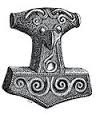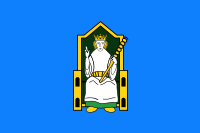Baron Longford Baron Annaly - Feudal Principality Seignory




The Blondel Hero MythThe name 'Blondel de Nesle' is attached to many ancient literary works or songs. Blondel was identified as Jean II of Nesle (near Amiens), who was nicknamed 'Blondel' for having long blond hair. Blondel married at the time of his father's death in 1202, and that same year, went on the Fourth Crusade; he later fought in the Albigensian Crusade. However, in 1994, Yvan Lepage suggested that the poet may have been Jean I, father of Jean II, who was Lord of Nesle from 1180 to 1202; this Jean took part in the Third Crusade, which may explain the subsequent legend linking him with Richard I of England. If the works are correctly identified and dated, he was a significant influence on his European contemporaries, who made much use of his melodies. (The melody of "L'amours dont sui espris" is used in Carmina Burana, for the song "Procurans Odium"). His works are fairly conventional, and several have been recorded in modern times. LegendBy 1260, Blondel's name had become attached to a legend in the highly fictionalised Récits d'un Ménestrel de Reims; this claimed that, after King Richard of England was arrested and held for ransom in 1192, he was found by the Knight Blondel, whom he saw from his window, and to whom he sang a verse of a song they both knew. Later versions of the story related that Blondel went from castle to castle, singing a particular song that only he and Richard would know, and that the imprisoned Richard replied with the second verse – thus identifying where he was captive. Then, Blondel either aided the king's escape or reported his position back to his friends. Blondel finally found Richard at Dürnstein; in fact, there was no mystery about Richard's location which was widely publicized by his ransomers. 'Blondel' is a common surname on the Channel Island of Guernsey. It is recorded that King Richard granted a fief on the island to a vassal named Blondel, but it remains uncertain as to whether this has any connection with the legend, or whether the legend has any connection with the known trouvère. Links: Blondel". The American Cyclopædia. 1879. King Richard Grants Fief: https://rowanlewgalon.deviantart.com/art/Jean-de-Nesle-106034284 |
Pedigree of Longford Annaly Lords Paramount Ireland About Longford Market & Fair Chief Captain Kings Forces Lord of the Pale Commissioners of the Peace Tenures Abolition Act 1662 - Rights to Sit in Parliament Law of Ireland Chief and Captainship of The Annaly List of Townlands of Longford Annaly The Seigneur English Pale Chief of the Annaly Princes of Annaly Pedigree Lord of St. Brigit's Longford Abbey Est. 1578 Kings of Hy Niall Colmanians Seneschal of Meath Prince of Annaly Principality Princes of Longford Feudal Princes of WestMeath A Barony Explained Court Barons News Irish Kingdoms Lordships of Granard Fishing & Dams Rights Rights of Lords & Barons Datuk Seri Baliwick of Ennerdale Moneylagen Feudal Barons Styles and Dignities Lord Baron Longford Baron de Delvyn Longford Map Lord Baron of Delvin Baron of Temple-Michael Baron of Annaly Kingdom Annaly Lord Conmaicne Baron Annaly Order of Saint Patrick Baron Lerha Granard Baron AbbeyLara Baronies of Longford Princes of Conmhaícne Angaile or Muintir Angaile Baron Lisnanagh or Lissaghanedan Baron Moyashel Moiety of Ardagh Baron Rathline Abbeys of Longford Grants to Delvin Baron Inchcleraun HOLY ISLAND Quaker Island Longoford CO Abbey of All Saints Hereditaments Kingdom of Uí Maine Baron Dungannon Baron Monilagan - Babington Lord Liserdawle Castle Baron Columbkille Kingdom of Breifne or Breny Baron Kilthorne Baron Granarde Count of Killasonna Baron Skryne Baron Cairbre-Gabhra AbbeyShrule Fiefs of the Islands Feudal Westmeath The Island Lords Fief Worship Channel Island History Fief Blondel Fief Blondel Merchandise Events Blondel and King Richard Fief Coin Feudal Guernsey Titles The Feudal System Flag & Arms Castle Site Map Disclaimer Blondel Myth Dictionary Honorable Colonel Mentz Order of St. Columba Valuation of Principality & Barony of Annaly Longford
Feudal Baron of Longford Annaly - Baron Longford Delvin Lord Baron &
Freiherr of Longford Annaly Feudal Barony Principality Count Kingdom of Meath - Feudal Lord of the Fief
Blondel of the Nordic Channel Islands Guernsey Est. 1179 George Mentz
Bio -
George Mentz Noble Title -
George Mentz Ambassador - Order of the Genet
Knighthood Feudalherr - Fief Blondel von der Nordischen
Insel Guernsey Est. 1179 * New York Gazette ®
- Magazine of Wall Street - George
Mentz - George
Mentz - Aspen Commission - Ennerdale - Stoborough - ESG
Commission - Ethnic Lives Matter
- Chartered Financial Manager -
George Mentz
Economist -
George Mentz Ambassador -
George Mentz - George Mentz Celebrity -
George Mentz Speaker - George Mentz Audio Books - George Mentz Courses - George Mentz Celebrity Speaker Wealth
Management -
Counselor George Mentz Esq. - Seigneur Feif Blondel - Lord Baron
Longford Annaly Westmeath
www.BaronLongford.com * www.FiefBlondel.com |




Commissioner George Mentz - George
Mentz Law Professor - George
Mentz Economist
George Mentz News -
George Mentz Illuminati Historian -
George Mentz Net Worth
The Globe and Mail George Mentz
Get Certifications in Finance and Banking to Have Career Growth | AP News